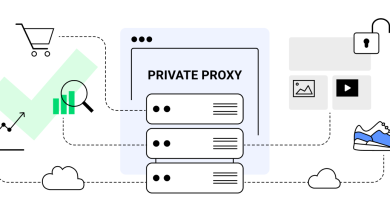Maximizing efficiency with Field Force Automation software

Field force automation (FFA) software provides technology solutions to help field service teams work more efficiently and productively. As field service operations become more complex, with teams managing heavy workloads across dispersed geographic territories, there is a growing need for streamlined coordination and intelligent optimization of field technician schedules and work. FFA software aims to drive efficiencies by equipping field technicians with mobile tools to simplify workflows, providing visibility into field operations, leveraging data insights, and enabling seamless collaboration.
By implementing an FFA software solution, field service organizations can improve technician productivity, increase work order completion rates, reduce costs, and boost customer satisfaction. Key capabilities of FFA software include real-time scheduling and dispatching, mobile work order management, inventory tracking, equipment monitoring, and data-driven analytics. Advanced solutions leverage AI and machine learning to optimize routes, predict asset failures, and automatically generate helpful reports. This allows field technicians to focus their time on completing more work orders and providing better service.
This article will explore how advanced FFA software helps field service teams maximize efficiency across critical workflows – from scheduling technicians to closing out work orders. We will discuss the key features and benefits of FFA solutions and provide real-world examples of how leading field service organizations use this technology to complete more jobs per day, lower operating costs, improve first-time fix rates, and satisfy customer expectations. Equipping mobile field technicians with smarter tools ultimately drives service excellence.
Real-time scheduling and dispatch
Field service teams often waste significant time and fuel with inefficient routing and dispatching. Technicians may crisscross back and forth across a service area based on outdated static schedules. Without real-time optimization, they can get stuck in unexpected traffic delays or spend longer at a customer site than planned.
Field Force Automation software helps optimize technician routes dynamically based on real-time traffic data and job duration updates. As new jobs come in throughout the day, the scheduling engine can insert them into tech routes in the most efficient sequence. Last minute cancellations or additions won’t lead to wasted windshield time between appointments.
The software also enables intelligent job dispatching and assignment. Work orders can get automatically assigned to the best suited technician based on parts on hand, skills required, and proximity to the job site. Rather than relying on memory or manual processes, the system tracks availability, qualifications, and location in real-time. This ensures the right technician gets matched to each job.
With automated scheduling and dispatching, field service teams can significantly reduce mileage expenses and technician drive time. More efficient routing means completing more jobs per day. Teams can provide faster response with less waiting for customers. And reduced windshield time directly translates to cost savings and higher productivity.
Mobile workflows
One of the key benefits of field force automation software is enabling mobile workflows for technicians. By providing technicians with mobile access to critical data, forms, and assets, field service teams can dramatically improve efficiency.
With mobile apps, technicians can view their schedules, customer information, equipment history and service records all from their smartphone or tablet. This puts the information they need literally in the palm of their hand rather than having to call into dispatch or keep paperwork on hand.
Mobile access enables technicians to complete work orders, inspections, surveys and audits digitally while out in the field. They can fill out forms, capture signatures, take photos, scan barcodes and more. This automates data collection rather than needing to enter paper forms back at the office.
By equipping technicians with mobile capabilities, they have immediate access to resources needed to complete jobs. This allows them to resolve issues faster without needing to go back and forth to the office to pick up parts, tools or paperwork. Everything they need can be accessed on their mobile device.
Going mobile significantly cuts down on manual data entry and paperwork, saving field service teams substantial time and effort. Technicians no longer need to carry and manage piles of forms, schedules and equipment records. All data is captured digitally in real-time, streamlining operations.
The benefits of automated data collection via mobile cannot be overstated. It eliminates human error from manual data entry while capturing critical information in real-time in the field. This allows teams to track key metrics, identify issues sooner, and have accurate data to optimize operations. Mobile workflows are a key driver for improved efficiency and productivity.
Inventory and parts management
Field service technicians want to spend their time fixing issues, not waiting around for parts. With field force automation software, technicians have real-time visibility into inventory across the organization. When they are dispatched for a job, they can immediately see if the required part is in the warehouse or on another truck.
This prevents wasted trips to sites when a needed part is unavailable. Technicians can also order parts right from their mobile device. The system can automatically generate restocking orders based on inventory levels. This ensures commonly used parts are always in stock without the need for manual oversight.
Additional benefits of automated inventory management include:
– Reduced technician downtime waiting for parts
– Increased first-time fix rates
– Lower excess and obsolete inventory through better tracking
– Streamlined supply chain with real-time ordering
– Accurate asset and consumable usage data
– Simplified warranty and returns management
With complete visibility and control over parts and inventory, field service organizations can maximize technician productivity and customer satisfaction. Parts become an asset instead of a liability.
Remote troubleshooting
Field technicians enabled with Field Force Automation software can often resolve issues remotely without needing to be physically onsite. This allows for greater efficiency and lower costs compared to always dispatching trucks for in-person visits.
With the remote troubleshooting capabilities in Field Force Automation solutions, technicians can utilize features such as:
– Live Video Streaming: Technicians can initiate video calls with customers to visually inspect equipment and walk through issues in real-time. This allows the technician to better diagnose problems.
– Image and Video Capture: Customers can send images and videos that the technician can review to identify potential issues or damage.
– Document Annotation: Technicians can view images and documents sent by the customer and annotate them with comments, arrows, circling etc to illustrate where an issue may lie.
– Screen Sharing: For complex technical issues, the technician can request the customer share their device screen so the technician can walk them through configurations, settings, and troubleshooting steps.
– Remote Control Access: With the customer’s consent, the technician can remotely access the customer’s device or equipment controls to diagnose issues and adjust configurations.
With these remote troubleshooting capabilities, many problems can be resolved without requiring lengthy wait times for an in-person technician visit. This results in faster resolution of issues, improved first-time fix rates, and cost savings on gas, vehicle usage, and labor costs. For the customer, it provides a more convenient experience without wait times for appointments. Overall, remote troubleshooting powered by Field Force Automation helps create more efficient field service operations.
Predictive maintenance
Field service organizations deal with hundreds or thousands of assets that need regular maintenance and repair. Traditionally, maintenance is scheduled based on elapsed time – like replacing parts every 6 months. This approach is not optimal. Some equipment fails before the scheduled maintenance interval, leading to unplanned downtime. Other assets continue performing fine long after the scheduled maintenance, resulting in unnecessary labor and parts expenses
Predictive maintenance uses data analytics to estimate when equipment needs maintenance based on real-time operating conditions and usage. Sensors can track temperature, vibration, power consumption and other metrics. The data is aggregated and analyzed to identify patterns indicative of impending failures.
Predictive maintenance enables condition-based and proactive servicing focused on assets likely to fail soon. Teams get alerts to address specific problems before they lead to downtime. This reduces unplanned outages and emergency repairs. It also avoids premature maintenance on assets still in good condition.
The key benefits include:
– Increased uptime and availability of assets
– Reduced costs from unplanned downtime and emergency repairs
– More efficient use of labor, inventory and parts
– Extended lifecycle of assets
– Improved planning and scheduling of maintenance activities
Predictive maintenance is a prime example of how Field Service Automation (FSA) leverages Internet of Things (IoT) data for smarter asset management. The combination of connected devices, big data analytics and mobile workflows allows field teams to transition from reactive to proactive servicing. This maximizes uptime and return on assets while lowering operating costs.
Automated reporting
Field service teams generate massive amounts of data through their daily operations. Field force automation software can capture this data and automatically generate insightful reports and analytics. Some key benefits of automated reporting include:
– Improved visibility into field operations – With automated reporting, management can easily monitor metrics like job completion rates, response times, parts usage, and technician performance. This provides visibility into daily field service activities.
– Data-driven decision making – Automated reports deliver actionable data that can inform better decision making. For example, analytics may show certain parts fail more frequently, allowing for parts replacements to be proactively scheduled.
– Enhanced accountability – Automated reports provide transparency into field technician productivity, parts usage, and work order completion. This allows management to identify high and low performers.
– Identification of cost-savings opportunities – Reporting can uncover trends like increased travel times, excessive overtime, or frequent on-site visits. This data allows optimizations to be made to reduce costs.
– Proactive monitoring for preventative maintenance – Analytics can detect patterns and predict potential equipment issues before they occur. Teams can get ahead of problems through preventative maintenance.
– Custom report generation – Users can generate custom reports tailored to their specific needs and share with appropriate stakeholders. This allows key metrics to be monitored over time.
With automated reporting capabilities, field service organizations gain critical insights to constantly improve operations, technician productivity, equipment uptime, and customer satisfaction. The data transparency drives accountability while enabling a proactive, efficient, and cost-effective field service program.
Integrations
Field service management software integrates with your existing business systems to enable end-to-end workflow automation. Some of the key integrations include:
– Accounting software – Send completed work orders and invoices to your accounting system to streamline billing and payments. Avoid manual data entry and reduce accounting errors.
– CRM software – Sync customer data between your CRM and field service platform. Get a unified view of customer history and interaction across sales, marketing and service teams.
– ERP software – Connect inventory, asset, and product data between your ERP and field service solution. Ensure teams have access to the right information.
– Scheduling applications – Integrate with calendar tools your team already uses to automatically sync schedules, appointments, and availability.
– Messaging apps – Send notifications via messaging apps like Slack or Teams to staff and customers. Improve communication without leaving your field service software.
– GPS and telematics – Connect with vehicle-mounted devices to track location, mileage, vehicle health data, and more.
With robust integrations, field service teams can manage the entire work lifecycle from a single platform. Workflows become seamless from start to finish. This eliminates data silos, reduces manual work, and allows for more efficient and higher quality service delivery.
ROI of Field Force Automation
Implementing field force automation software can deliver significant returns on investment for companies with distributed field service teams. By equipping technicians with mobile technology and optimizing dispatch and routing, organizations can realize major gains in workforce productivity and efficiency.
According to research by Aberdeen Group, best-in-class service organizations saw a 27% faster first-time fix rate after implementing mobile field force automation solutions. The top performers also increased worker productivity by 23% and reduced administrative work by 30%.
Some typical ROI benefits from field force automation include:
– Reduced drive and technician downtime : With optimized routing and scheduling, technicians spend less time driving between jobsites and waiting for appointments to begin. This allows them to complete more service calls per day. One HVAC company saw a 22% productivity boost after implementing automated dispatching.
– Faster job resolution : Features like remote troubleshooting and access to digital knowledge bases allow technicians to diagnose and resolve issues more rapidly, leading to higher first-time fix rates. An industrial equipment company achieved 35% faster resolution times after deploying mobile field service apps.
– Lower operational costs : By eliminating manual paperwork and improving inventory management, companies can significantly reduce administrative costs. A telecom business cut invoicing costs by 50% and data entry by 80% with automated field service reporting.
– Enhanced customer satisfaction : With real-time updates, faster response times and first-visit resolutions, customer satisfaction typically improves significantly. One field services firm increased its customer satisfaction rate from 82% to 94% after implementing a field force automation system.
To maximize ROI, it’s critical to choose user-friendly field force automation software that seamlessly integrates with existing back-office systems. Training field techs on the new mobile tools is also key to driving adoption and efficiency gains. But once deployed correctly, most organizations see rapid benefits and a strong return on their technology investment.
Conclusion
Field Force Automation (FFA) software provides numerous benefits for service companies looking to maximize efficiency of their field operations. By leveraging real-time scheduling and dispatch, mobile workflows, inventory management, and data-driven insights, FFA solutions optimize every aspect of a field service team’s operations.
Some of the key benefits for efficiency include:
– Reduced drive and technician downtime through intelligent routing and scheduling
– Increased first-time fix rates by equipping techs with the right information
– Lower administrative costs by eliminating paperwork and manual processes
– Improved inventory control and parts management
– Enhanced worker productivity through streamlined work order management
– Better visibility into performance metrics to identify areas for improvement
Overall, FFA software allows field service organizations to enhance coordination between the office, field techs, and customers. Automating routine tasks and providing mobile capabilities empowers technicians to complete more jobs per day. The data and analytics from an FFA system also provide critical insights to optimize schedules, resources, and processes across the service lifecycle.
Implementing a modern field force automation solution is one of the best investments a service company can make to maximize efficiency, productivity and profitability of their field operations. The technology capabilities and process improvements add up to significant operational gains.





